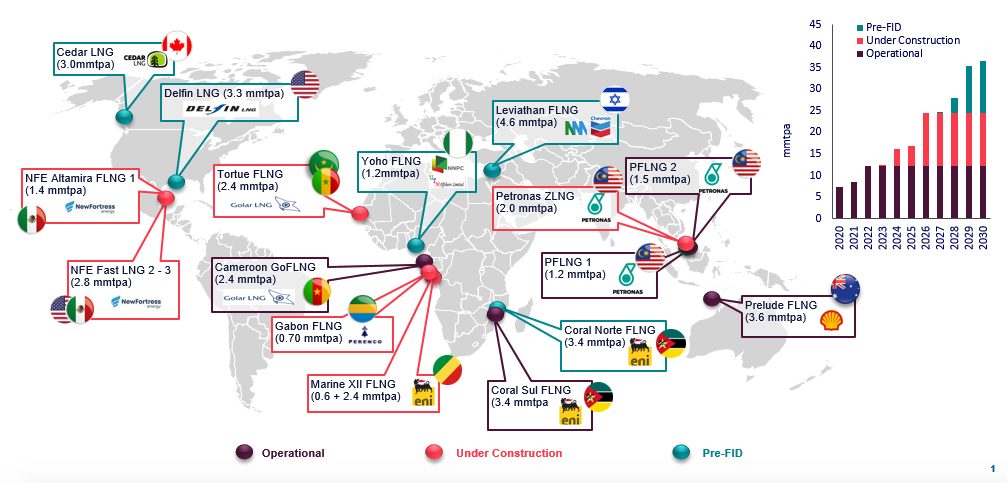- The right economic and geo-political conditions mean that the outlook for the global floating liquified natural gas (FLNG) project sector is bullish according to a new report by Wood Mackenzie, a global insight business for renewables, energy and natural resources.
The ‘Global FLNG Overview 2023’ states that 8.5 million tonnes per annum (mmtpa) of FLNG capacity was sanctioned in 2022 making it clear that after several years in the project doldrums, investor interest in floating is back.
“There is 12.5 mmtpa of FLNG projects currently under construction and by 2026, almost 25 mmtpa of floating supply will be operational,” says Fraser Carson, Senior Gas Research Analyst at Wood Mackenzie. “With international oil companies (IOCs), upstream producers and midstream specialists all moving projects towards final investment decisions that could push capacity even higher by 2030.”
The report adds that lessons have been learned from the FLNG sector’s chequered history with issues around cost overruns, project delays and reliability all seeing major improvements over the last few years.
“After a stuttering start, FLNG is proving to be a reliable commercialisation option,” Carson says. “The utilisation of FLNG facilities in Cameroon and Malaysia have been strong over the last year, with the units producing at close to or above 100% of available capacity.”
Where will FLNG growth come from?
The report cites Africa as the centre of the current boom in FLNG projects as several resource-rich countries look for solutions that would allow them the option of exporting any gas not utilised on their respective domestic markets.
Where Existing, under construction and selected pre-FID FLNG projects

Source: Wood Mackenzie
“FLNG is removed from these above-ground risks such as armed insurgency and infrastructure sabotage,” Carson says. “It offers producers a flexible solution to existing challenges.”
The report adds that within the last year, experienced FLNG developers Eni and Perenco have sanctioned a two-phase floating development in Congo and a barge-based project in Gabon, respectively.
Other projects in Africa that are being considered include utilising FLNG to access Nigeria’s stranded offshore volumes, while in East Africa, FLNG continues to be linked as a potential development option for the Rovuma project in Mozambique.
“Despite the bullish outlook, FLNG is not without risks,” Carson says. “We estimate that up to 20 mmtpa of new FLNG capacity will be sanctioned over the next two years and this will primarily be developed in markets where there are concerns of cost blowouts, scheduling delays and security risks.”
Author: Bryan Groenendaal
Source: Woodmac















